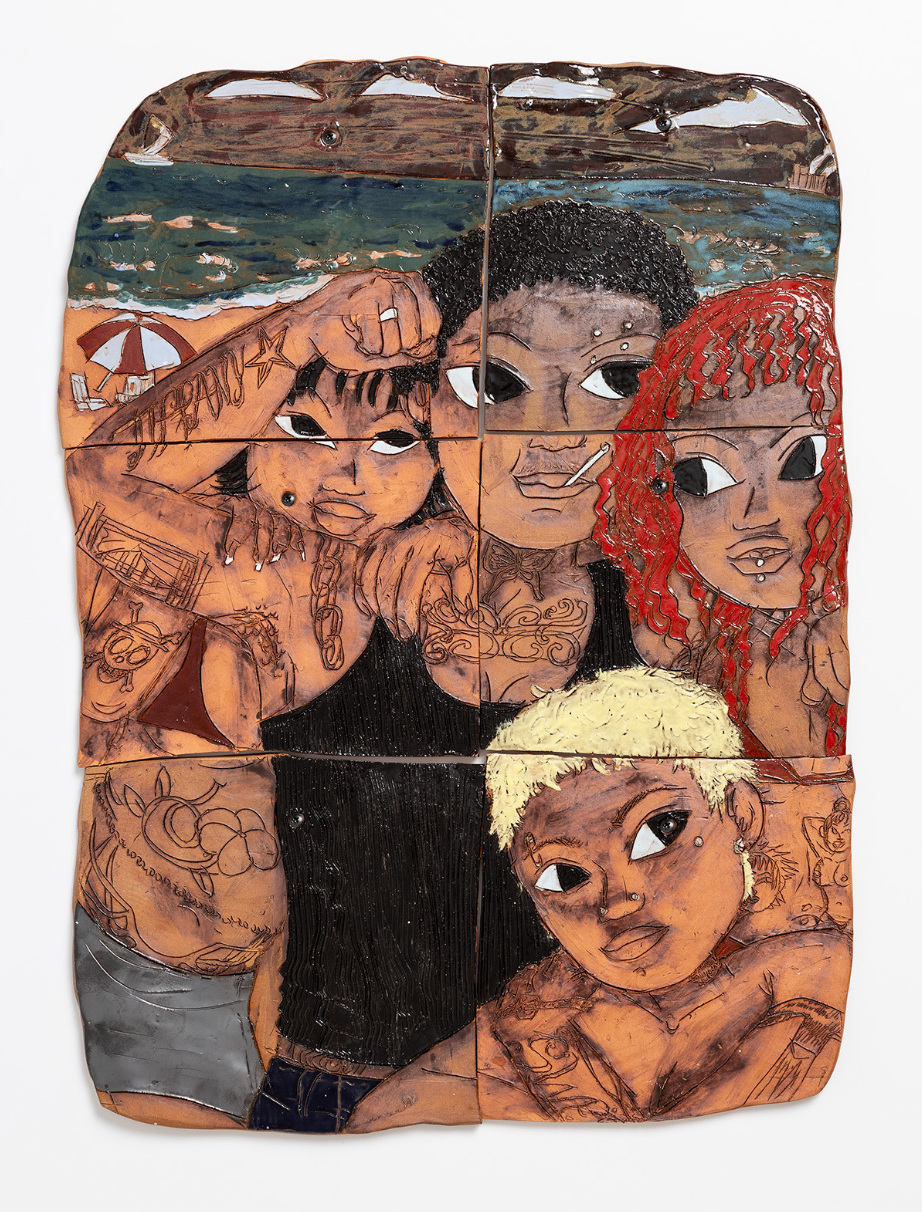In this conversation, we spoke with Haylie Jimenez about the language of clay as both surface and inscription. Jimenez reflects on how carving, animation, and storytelling converge in her work, creating forms that carry memory forward while opening new ways to materialize cycles of grief and joy. The practice reimagines the ideology of collective permanence, an evolving medium of care, continuity, and shared remembrance.

Your practice often uses clay as an extension of memory. Were their formative moments in your upbringing, cultural surroundings, or teaching practice that made you turn toward carving as a tool of remembrance?
The first time I began carving into clay was in 2020, which was a year full of such collective fear, unknowing, and uncertainty; which definitely carried into my practice. I remember feeling unsure about if my work was going in the right direction. After following through with the process, firing the carved tile to bisque temperature, treating the surface with different stains and glazes, and firing it for the second time to glaze temperature, over and over I gradually began building a body of work that became cohesive, texturally visceral with its various sharp, smooth, and rough edges. My carving practice came directly from my drawing on paper practice, that has brought the imagery of essentially recording memory a sense of urgency yet perpetuity.
In Now We’re Cooking With Grease, you bring animation into dialogue with carved ceramic slabs. How do you see movement and permanence working together in this installation, and what does that relationship open up in your practice?
In undergrad where I attended the School of the Art Institute of Chicago, I focused and had my most formal training in animation and comics and only took one ceramics class during my time there. During my residency at Sonoma community center and during the creation of NWCWG was so pivotal in merging my more recent ceramic-centered practice and my long time animation background. At the Art Institute of Chicago, I remember studying the Pre-Colombian exhibits and seeing the parallel of expressive mark-making and registers of progressive imagery on the ceramic vessels and structures that is so common in comics and animation. The added elements of time and movement that animation brings to the textures and surfaces of clay merges the permanence and ancient feel of clay and brings it into the familiar and contemporary.
Your imagery often places figures in parallel with elements of the natural world—trees, water, growth. What role does nature play as a mirror for intimacy, and how do you think these parallels expand the way we remember or honor relationships within a community?
Growing up in north Georgia, being surrounded by the nature of the southern Appalachian mountains, and then living in Chicago since 2016 has garnered in me a deep nostalgia for nature but also a need to be surrounded by it once in a while. The notion of nature as a mirror of intimacy came to me whilst making this film and exhibition. Often I find my work and writing come together in ways that are non linear, usually in ways where throughout the process of making and as the work comes together is also where I learn and discover the words to describe the work. The parallels of intimacy found between nature and interpersonal relationships feels so affirming, important, and necessary.


Your work captures cycles of grief, joy, and preservation within marginalized communities through carved clay scenes. What draws you to translating these experiences into forms that endure?
Within marginalized communities, it is often a sentiment that we must endure hardship without complaint, bulldoze over trauma, and be thankful for what we have. While this does keep things moving in a sense, this way of thinking destroys the mind and body exponentially whilst contributing to generational trauma. Shifting the narrative to cycles of grief, joy, and preservation is not only affirming these experiences of long time trauma but also promotes schools of thought towards intergenerational healing and moving forward.
You've described yourself as both artist and educator, drawn to collaboration. How do exchanges with students, peers, or communities influence what you choose to preserve, and have these conversations shifted how you think about care and loss?
Collaboration is important to me in all aspects of moving through life and especially in my practice! Collaboration amongst the community is the only reason I've been able to become the artist I am today, through the sharing of knowledge around skills, materials, and ideas. Conversation is the simplest and easiest form of collaboration as a vehicle to share this knowledge. Throughout teaching so much these past two years, I'm constantly learning about how hesitancy, doubt, encouragement and endeavourance go hand in hand and are so essential to learning. Cycles of care and loss particularly come to play in working with clay as it can be such a fragile yet hard medium quite literally.

In a culture often marked by rapid forgetting, your work slows time and insists on care. How do storytelling, natural resources, memory, color, and playfulness shape how your practice connects with others and sustains shared histories?
As someone who notoriously has a bad memory, I think it was very streamlined for me to make work around storytelling, and in regards to animation, being able to carry out this storytelling with added elements of time and sound that brings a viscerality to this often memory-based work. The specificity of drawing from personal histories Ive found has only brought a sense of familiarity amongst those that I have all kinds of intersectioning shared experiences with.

This conversation reveals a practice rooted in translation, where experience takes shape through form, and form becomes a record of care.
Thank you to Haylie for sharing a practice that continues to expand how we understand clay as a site of intimacy and collective renewal.
Photo Credits: Haylie Jimenez
Explore her work: @_h4yli3
By Maya Bigirimana
